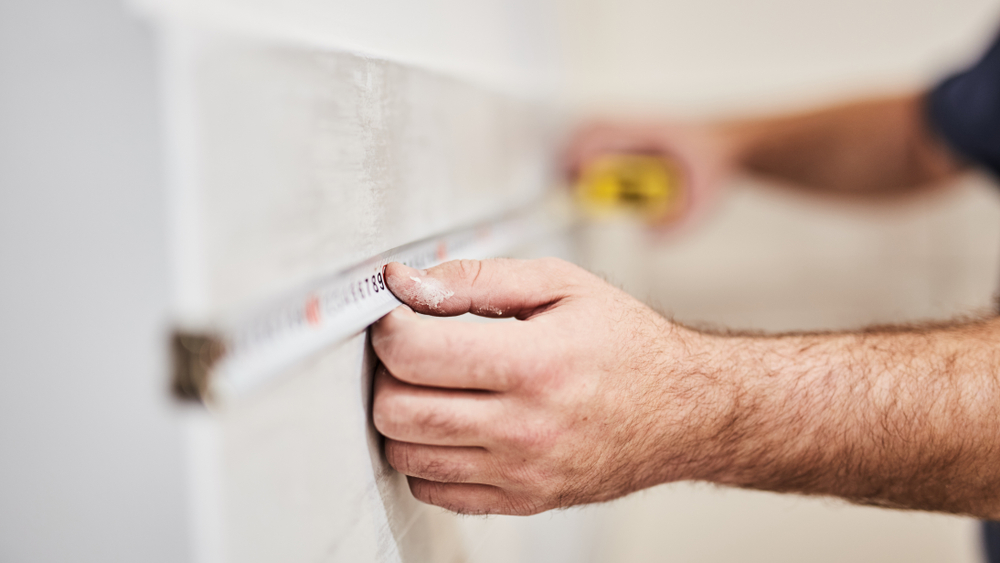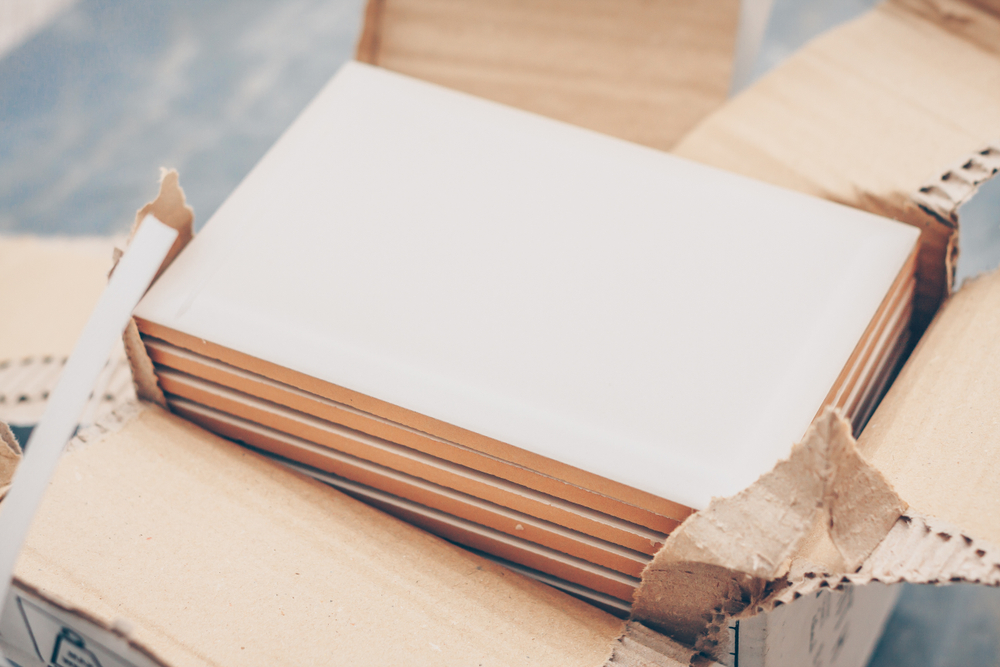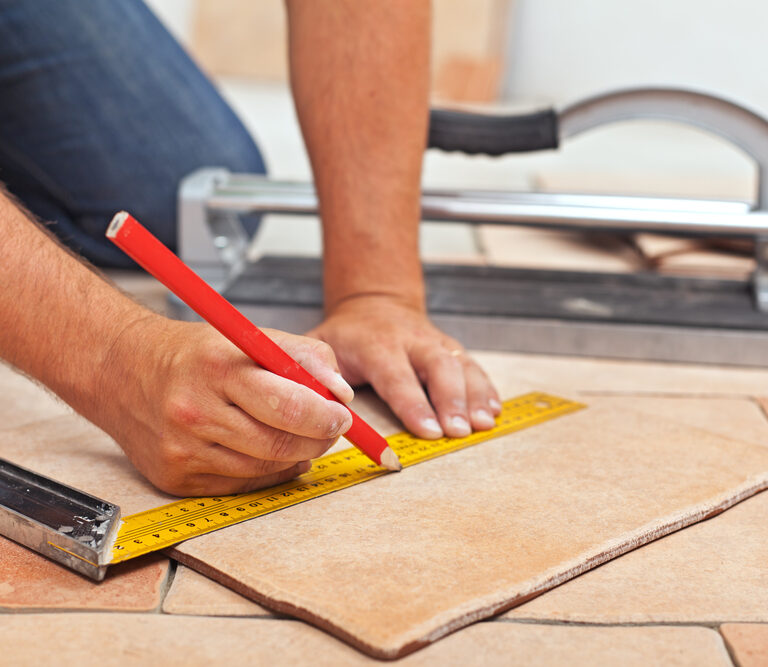There’s no better way to revitalize your lackluster bathroom or kitchen than replacing those worn-out tiles. Not only do new tiles look sleek, but they’re easy to clean and safeguard against mold.
But the tiling process is somewhat challenging for the home improvement novice, not least because you have to figure out how many of the things you’ll need. Buy too many, and you’ll waste your hard-earned dough; too few and you’ll run out halfway through.
But with some basic math—no need to memorize the Pythagorean theorem here—and a measuring tape, it’s easy to calculate the correct number of tiles.
We’ll show you a few handy tricks to help you purchase the right amount of tiles without relying on complex math. Toss those old geometry textbooks aside and read our dummy-proof guide instead.
1. Gather the Tools of the Trade
Your first step is to gather the tools of the trade. Luckily, calculating tiles doesn’t require any fancy equipment—in fact, you probably already have the following items at home.
- A measuring tape
- A pen and paper
That’s it. You’re now ready to start calculating your tiling needs.
2. Separate Your Irregular-Shaped Room Into Areas
If the wall or floor you’re tiling isn’t a perfect square or rectangle, then the easiest way to measure your tiles is to break it down into bite-sized bits.
- Evaluate your space to determine the best way to divide it into separate areas.
- Divide the room into square/rectangular sections.
Say you have an L-shaped bathroom floor, for example. You need to separate the top part of the L and the bottom bit into two separate sections.
If the surface you want to tile is already one square or rectangle, then you can safely skip this step.
3. Measure the Area

The next step is to grab your tape and measure the dimensions of the specific areas you plan to tile.
- Measure the length and width (or height if it’s a wall) for all the sectioned-off areas you plan to tile.
- Jot these numbers down on paper.
Always round up to the nearest inch. For example, if your floor is 8-foot and 7.5 inches long, record 8 feet and 8 inches in your notes. It’s always better to have a few tiles left over than too few—we’ll explain why in more detail below.
4. Use an Online Tile Calculator to Determine How Many Tiles You Need
While the tile layers of the past had to perform mind-bending mental gymnastics to convert feet and inches into a decimal number (as an aside, it’s much easier with the metric system), things are so much easier in the digital age.
An online tile calculator can determine exactly how many tiles you need on your behalf. All you have to do is enter your measurements.
Various options pop up with a Google Search, all of which should—in theory—give accurate results. Nonetheless, we can vouch for the Online Tile Calculator provided by a company called Best Tiles, which works like a charm.
- Enter the length and width of each area into the relevant box.
- Hit the calculate button.
- Your (minimum) tiled area square footage will appear in the “Total Sq Ft All Areas”
If you’re purchasing individual tiles, you can use the same online calculator to work out precisely how many you need.
- Enter the width and height of each of your areas into the relevant box.
- Enter the dimensions of the individual tiles into the relevant box.
- The “Total Individual Tile Estimate” column will tell you how many tiles you need.
Calculating Circular Areas
If you need to calculate tiles to cover a circular area, then this above won’t cut it. In this case, you’ll need to exercise some of math—but don’t worry, it’s not too difficult.
- Measure the radius of the circle (half the diameter)
- Multiply the radius by 10
- Multiply the result by 3.14 (which is pie, that magic circles number you vaguely remember from high school math)
- Add on your buffer (explained below)
Let’s say your circular area has a diameter of 10 feet. Half that is 5 feet (the radius), and 5 x 10 is 50. Next, 3.14 x 50 is 157, which is the square footage you need, not including the buffer.
5. Add in 10% Extra
Even the most seasoned tile-laying professional will need more tiles than the bare minimum figure. A whole host of reasons warrant purchasing at least 10% more than the precise square footage.
- Some tiles may arrive already broken in the box.
- You could inadvertently snap tiles while cutting or laying them out.
- You may need to cut down tiles to place on edges or corners where a full tile won’t fit.
- You may need to replace tiles that don’t adhere properly to the mortar.
- You might have to replace tiles that crack or chip over time.
Having a buffer of at least 10% allows you to resolve these issues quickly. Plus, should your tiles go out of production further down the track, you’ll have enough spares on hand to replace them as needed. Otherwise, you’d need to re-tile the entire room, and you definitely don’t want to do that.
The online tile calculator we recommended above factors in this buffer under the “Estimated Total Sq Ft” section.
If you’re attempting a fancy pattern like a diagonal offset or herringbone, you’re going to have to cut more tiles down to size, which means you’ll waste more. In this situation, a 20% buffer is ideal.
Multiply your square footage by 1.2 to work out the buffer (i.e., 100 sq ft x 1.2 = 120 sq ft).
6. Working Out How Many Boxes to Buy

Most hardware stores sell tiles by the box, which equate to a certain number of square feet, typically 10. The safest bet is to round up to the next box, even if you’ve already got a generous buffer in place.
Say, for example, you’ve worked out you need 85 square feet (including your buffer), and your local hardware store is selling tiles in 10 sq ft boxes, then grab nine boxes to be on the safe side.
How Much Tile Do I Need: Final Thoughts
While using a handheld calculator to work out how many tiles you need is pretty easy in the metric system, it’s a chore when dealing with inches and feet.
But with the information obtained in this guide and the power of a computerized online calculator, it’s no sweat. And by working out the right amount of tiles for your upcoming project, you’ll get the job done right without unnecessary expenditure.
Just remember to factor in your buffer because you always need a few more tiles than the minimum possible amount.
